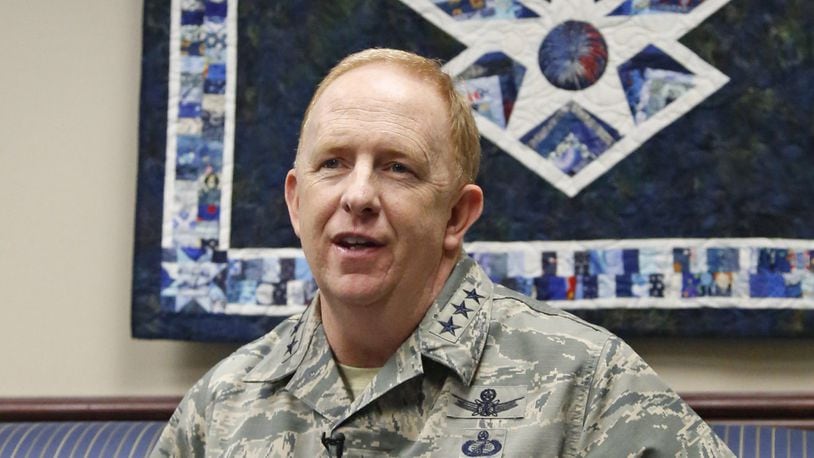RELATED: Protecting Wright Patt goal of BRAC Task Force visit
“We stopped hiring, payroll was hit, we stopped flying,” said Lt. Gen. Robert D. McMurry, commander of the Wright-Patterson-headquartered Air Force Life Cycle Management Center, which has roughly 26,000 employees at dozens of locations. “That’s a big step.”
Military and congressional leaders have warned of the impact if spending caps under the Budget Control Act of 2011 aren’t lifted on combat readiness, maintenance, and the toll on service members and aging aircraft, ships and equipment.
Congress sent a nearly $700 billion defense authorization bill to President Donald Trump for his signature this month, more than the White House requested.
If spending caps imposed under the Budget Control Act aren’t removed, baseline defense spending will be capped at $549 billion.
In place of a final budget, a continuing resolution has kept the government operating since Oct. 1, the start of the fiscal year. The resolution, which expires Dec. 8, caps spending at last year’s levels. And until a final defense appropriations budget is approved, about 135 Air Force programs have delayed starting, according to Wright-Patterson officials. Among the funding postponements: New, advanced warning systems on C-130s and F-16s and updated infrared tracking systems on the F-15, a Wright-Patt spokesperson said.
RELATED: Air Force facing growing crisis in pilot shortage
Uncertainty in the workforce
Since the worst of sequestration, the Air Force has struggled to restore combat readiness in part because of a reduction in pilots’ flight hours and employees have had their confidence in the federal workforce as a steadfast employer “shaken,” McMurry said.
“In my job, one of the things I worry about most is can I attract talent,” the three-star general said. “Can I get the talent I need to do the jobs that we have and our jobs are fairly high tech, everything from physicists to lawyers to accountants.”
Life Cycle Management Center competition with industry to hire employees is harder without budget certainty, he indicated.
“They need the same people,” he said. “Often industry pays more than we do. … The mission is our selling point. People who work for us are patriots. They care about the defense of their country. They want to do the job well, but by the same token if they’re uncertain about the government’s steadfastness in making sure they get paid or making sure the programs continue, they’ll look elsewhere.”
RELATED: Ohio leaders say funding will help protect Wright Patt
The average age of an Air Force plane is about 27 years, and many have flown in repeated deployments over nearly three decades since the first Gulf War. Some aircraft are decades old and expected to fly decades more, according to the Air Force.
“When you’re being asked to do more mission than you really have a budget and a force for … you really need to make sure the systems are as good as they can be and a lot of our systems are aging out,” McMurry said.
“We’re going to fly the B-52 ‘til 2040,” he said. The last one was built in 1962. “They’re going to be 90-year-old aircraft when we stop flying them. You’ve got to spend money to keep aircraft like that effective and flying.”
House lawmakers call for end to caps
In a visit to Wright-Patterson last month, U.S. Rep. Mac Thornberry, House Armed Services Committee chairman, and U.S. Rep. Mike Turner, R-Dayton, bemoaned the impact of sequestration.
Thornberry said the Air Force was “hemorrhaging pilots” and had a shortfall of thousands of aircraft maintainers.
The Texas Republican backed eliminating the budget sequester, but anticipated a final deal would be reached before a Dec. 8 deadline when the continuing resolution ends.
“I just as soon we not wait until Dec. 7 to fix it, but that is the absolute deadline,” Thornberry told reporters at Wright-Patterson last month. “I think that it is very likely that there will be some sort or either adjustment or my favorite would be repeal completely the Budget Control Act limits so … defense can be evaluated on its own merits and not tied into some other political agenda.”
Others have said sequestration was imposed to curb growing deficit spending the nation can’t afford.
The Associated Press contributed to this story.
About the Author
